This article was published in Scientific American’s former blog network and reflects the views of the author, not necessarily those of Scientific American
Earlier this week, the Rosetta spacecraft’s Philae lander finally woke up after a seven-month snooze. When Philae touched down on Comet 67P/Churyumov-Gerasimenko last November, it landed in a shady spot and didn’t get enough sunlight to recharge its batteries. So after only 57 hours of operation, the lander went dormant. Now that Philae is back in action, scientists await the next contact, which should reveal more details about the comet’s activity over the past few days.
Philae is not the only spacecraft that’s ever come back from the brink of death. Operating data-collecting robots in space is tricky business; there’s a lot that can go wrong during months, years or even decades of travel across the solar system. But sometimes, even when all hope seems lost, scientists and engineers can salvage a spacecraft. In celebration of Philae’s awakening, let’s take a look at some of the spacecraft that have been rescued, resurrected and repurposed over the years.
Voyager 2
On supporting science journalism
If you're enjoying this article, consider supporting our award-winning journalism by subscribing. By purchasing a subscription you are helping to ensure the future of impactful stories about the discoveries and ideas shaping our world today.
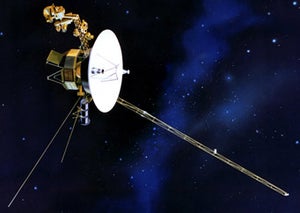
Credit: NASA/JPL-Caltech
NASA created Voyager 2 to tour the outer solar system, taking advantage of a serendipitous alignment of planets that only occurs once every 176 years. The spacecraft’s primary radio receiver malfunctioned in April 1978, requiring a series of delicate remote interventions as ground controllers reprogrammed Voyager 2 to rely on a backup unit, which it as used ever since. Despite this early hiccup in the mission, Voyager 2 has been a resounding success. On its tour through the Jovian system it captured images that, when compared with those from its twin Voyager 1, show the effects of volcanic activity on Io. Voyager 2 provided then-unprecedented glimpses of Europa and showed Saturn’s rings and moons in spectacular detail. Finally, thanks to more reprogramming to account for longer exposure times in the light-starved solar hinterlands, it delivered the first-ever close-up images of Uranus and Neptune. The spacecraft has been trundling along for over 37 years now, still transmitting data back to the Deep Space Network for its extended mission: exploring the outermost fringes of the solar system.
Hubble
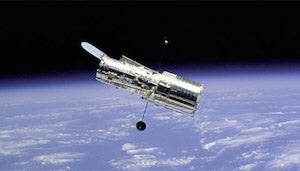
Credit: NASA
Since 1990, the Hubble Space Telescope has provided glimpses into some of the most distant, exotic regions of the observable universe. Hubble undoubtedly revolutionized modern astronomy, but its observations got off to a rough start. The first pictures Hubble produced were blurry—true, they were unparalleled views of the cosmos, but the images fell short of the pristine high-resolution photographs expected from the expensive space telescope. The problem was a slight optical defect called spherical aberration. Basically, the outer edge of Hubble’s mirror was about 2 microns too flat. During the first servicing mission in December 1993, a crew of astronauts installed a device made up of five pairs of corrective mirrors, which alleviated the blurring problem. With this device, along with a suite of other new instruments, Hubble reached its full observing potential.
Galileo
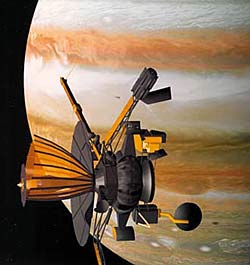
Credit: JPL/NASA
In 1995, Galileo became the first spacecraft to orbit Jupiter, but not without a couple of major hitches along the way. First, Galileo’s high-gain antenna failed to open, jeopardizing the spacecraft’s ability to communicate with Earth. The antenna, shaped somewhat like an umbrella, was stowed in the spacecraft for the first two years of its journey. When mission controllers tried to unfurl it in 1991, they found that some of the antenna’s “ribs” were stuck. Luckily, NASA scientists devised a way to compress the data so that Galileo could transmit back to Earth using its backup antenna. Then, just when Galileo was closing in on Jupiter, its on-board data recorder jammed. Mission controllers came up with another workaround, and Galileo was operational again within a few weeks, but the recorder continued to ail the spacecraft for years to come.
Opportunity
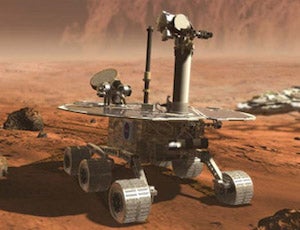
Credit: NASA/JPL
At the end of April 2005, the Opportunity rover came to a grinding halt when all six of its wheels became deeply entrenched in a large ripple of Martian soil. The rover was en route to Erebus Crater, an impact site punched into an even larger crater called Terra Nova. This was not the first time Opportunity had been bogged down in the sand, but it still took mission controllers a month to extricate the robot. In a series of cautious steps executed from May 13 to June 4, Opportunity had to churn almost 200 meters of wheel rotations just to get enough traction to actually move forward a single meter. On the plus side, it gave the team an opportunity to study the surrounding scenery and gather information on the terrain.
Yutu

Credit: Chinese Academy of Sciences
China’s maiden lunar rover was presumed dead for a few days during its three-month expedition last year. Since Yutu was solar powered, the rover had to hibernate (shut down most of its systems) during the cold, two-week lunar nights. But when Yutu was supposed to wake up from its second hibernation on February 8, mission controllers in Beijing could not connect with the rover. Luckily, Yutu was not dead, just sleeping in. The rover came back online two days later, though it continued to experience mechanical control difficulties.
Kepler
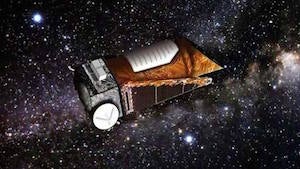
Credit: NASA
When Kepler malfunctioned in May 2013, it seemed the planet-hunting telescope had met its demise. It had been scouring a single patch of the sky near the constellation Cygnus since 2009 for signs of planets orbiting stars. However, the failure of two out of four of Kepler’s reaction wheels left the spacecraft unable to precisely control its pointing, jeopardizing the mission. NASA scientists and engineers were not willing to give up on the telescope, and devised a way for Kepler to use the pressure of sunlight to stabilize its pointing within the plane of Earth’s orbit around the Sun. In June 2014, Kepler began its second mission, dubbed “K2.” The telescope now observes celestial phenomena in its new line of sight, ranging from planets to supernovas to active galactic nuclei. K2 mission planners draw all targets from different research teams’ proposals, so in its second life Kepler is very much a community telescope.
Dawn
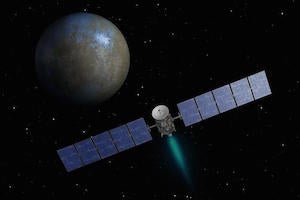
Credit: NASA/JPL-Caltech
In September 2014, the Dawn space probe was on its way to visit the largest object in the asteroid belt, Ceres, when its ion thruster unexpectedly stopped firing and the spacecraft entered safe mode. Dawn had experienced a similar malfunction three years earlier when a high-energy radiation particle slammed into its electrical system. The Dawn team suspected that a similar particle was responsible for the second complication, so they employed the same strategy to get their spacecraft up and running, subbing in another ion engine and a different electronic controller so that they could resume thrusting as soon as possible. Four days later, Dawn was once again accelerating on its merry way to Ceres.
LightSail
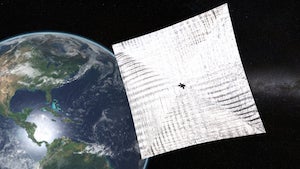
Credit: Josh Spradling/The Planetary Society
The Planetary Society’s LightSail CubeSat led a brief but eventful life. Just two days after it entered low-Earth orbit, a software glitch prevented the satellite from communicating with Earth. Fortunately, LightSail was revived when a fast-moving charged particle struck its electronics board like some sort of cosmic defibrillator. LightSail went silent again on June 3 (probably due to a battery problem) but was back in touch with Earth by June 6. The following day, the LightSail team deployed the CubeSat’s solar sail. The tiny spacecraft spent another week in orbit before tumbling back into Earth’s atmosphere, officially ending the test mission. The Planetary Society will launch a more full-fledged solar sailing demonstration next year.